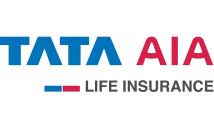Income Tax in India
Income tax is a direct tax which you are supposed to pay to the Indian Government if you earn an income in India. Whether you are an Indian citizen or a NRI, any income generated in India is taxable as per the Indian Income Tax Act which was passed in the year 1961. Indian citizens pay income tax on their global income (income earned in India and abroad) while NRIs pay income tax in India only on the income which they earn in India. Thus, if you earn an income, you pay an income tax on it.
Who pays income tax?
Income tax is payable by the following –
- Individuals
- Hindu Undivided Families (HUFs)
- Body of Individuals (BOI)
- Association of Persons (AOP)
- Companies
- Firms
The term ‘income’, from the point of view of income tax calculation, consists of all types of incomes which you earn in a year. As per the income tax rules, five heads of incomes are recognised and your income is apportioned to each relevant head of income. The five heads in which income is segregated include the following –
Heads of income
- Income from salaryThis is the most common and also the most popular head of income. If you are a salaried employee, the salary that you earn is categorised under the head income from salary.
- Income from house propertyIf you have a house property and you rent it out, the rental income generated is called income from house property. The house property, in this context, can be a residential property or a commercial one.
- Income from business or professionIf you have a self-proprietorship business or a profession, the income you earn from the business or profession is placed under the head income from business or profession.
- Income from capital gainsCapital gains are incurred when you sell a capital asset at a profit. A capital asset is any type of property (except inventory and accounts receivable) which is owned by the tax payer. If the capital asset is sold at a price higher than at which it was acquired, a capital gain is incurred. The gain can be short term or long term depending on the period for which the capital asset was held before it was sold. Capital gains are added to your income and taxed depending on the type of gains incurred and the type of asset on which the gain is incurred. Alternatively, if the capital asset is sold at a price lower than at which it was purchased, a capital loss is incurred. This loss is used to reduce the taxable income and consequently the tax liability.
- Income from other sourcesAny other income that you earn in a year and which cannot be placed in any of the above-mentioned four heads is placed under the head ‘income from other sources’. Common examples include interest earned from savings account or fixed deposits, dividend earned from equity investments, gifts received, etc.The total income which you earn in a financial year is segregated into these five heads. Thereafter, the total income is taxed as per the existing tax rates. Firms and companies have a flat tax rate of 30% on the profit which they earn. For other tax payers, i.e. individuals, HUFs, BOIs and AOPs, tax is charged on a progressive basis. This means that as the income increases, the tax rate increases. The tax rate is different for different levels of income and the rates are presented in a tax slab which can be changed by the Government from time to time. The existing tax slab is as follows –
Tax slab –
| Income level | Applicable rate of tax |
|---|---|
| For the first INR 2.5 lakhs | Nil |
| INR 250,001 to INR 500,000 | 5% of the income exceeding INR 2.5 lakhs |
| INR 500,001 to INR 10,00,000 | On the first INR 2.5 lakhs – nil+On the income between INR 250,001 to INR 500,000 – 5%+On the income exceeding INR 5 lakhs – 20% |
| INR 10,00,001 and above | On the first INR 2.5 lakhs – nil+On the income between INR 250,001 to INR 500,000 – 5%+On the income between INR 500,001 to INR 10,00,000 – 20% + On the income exceeding 10 lakhs – 30% |
So, if you are earning an income of INR 7.5 lakhs, you wouldn’t be charged a flat tax of 20%. The tax would be calculated in a progressive manner in the following way –
| On the first INR 2.5 lakhs | Nil |
| On the next 2.5 lakhs | 5% of 2.5 lakhs=INR 12,500 |
| On the next 2.5 lakhs (income exceeding 5 lakhs) | 20% of 2.5 lakhs=INR 50,000 |
| Total tax payable | INR 62,500 |
Similarly, if you earn an income of INR 12 lakhs annually, the calculation would be as follows –
| On the first INR 2.5 lakhs | Nil |
| On the next 2.5 lakhs | 5% of 2.5 lakhs=INR 12,500 |
| On the next 5 lakhs | 20% of 5 lakhs=INR 100,000 |
| On the last 2 lakhs (income exceeding 10 lakhs) | 30% of 2 lakhs=INR 60,000 |
| Total tax payable | INR 172,500 |
However, as per the changes proposed in the Interim Budget, 2019, if your net taxable income is up to INR 5 lakhs, you wouldn’t have to pay any tax on your income. In such cases, therefore, there is a rebate and your tax liability becomes nil.
Before calculating your tax liability, there are some common terms related to tax which you should know about. These terms include the following –
- Assesse – assesse is the individual or the tax payer whose income is subjected to income tax.
- Assessment year – assessment year is the year in which the assesse’s income is being assessed and taxed.
- Previous year – previous year is the year immediately preceding the assessment year in which the income has been generated. Previous year is also called a financial year which starts from 1st April and ends on 31st March. So, if you earn an income between 1st April 2018 and 31st March 2019, your previous year would be 2018-19 and the assessment year would be 2019-20.
Now that you know what is income tax, who pays it, the heads of income and the applicable tax rates you should know the various ways in which tax liability can be reduced. The Income Tax Act, 1961 provides various deductions and exemptions which help in lowering the taxable income which, in turn, lowers the tax liability. Let’s understand the deductions which are available –
Chapter VI A of the Income Tax Act, 1961
Chapter VI A of the Income Tax Act lists down some very popular sections which allow deductions from your taxable income if you invest in specified avenues or incur expenses for specific reasons. Chapter VI A contains deductions under different sub-sections of Section 80. Here are the deductions which are available under the chapter –
- Section 80C – popular investments and expensesThe first and also the most important section under Chapter VI A is Section 80C. You can claim a deduction of up to INR 1.5 lakhs under this section if you invest or spend on the following –
- Life Insurance :
- The premium paid is tax-free U/S 80 C provided:
- If the premium is not more than 10% of the sum assured and
- The policy is held for a minimum of 2 years for endowment plans
- In case of ULIPs, the minimum holding period is 5 years
- Life Insurance has EEE taxation, i.e.
- Exemption during investment U/S 80C
- Maturity amount is tax-free U/S 10(10)D
- The premium paid is tax-free U/S 80 C provided:
- ELSS: Investment in tax saving mutual funds, i.e. Equity Linked Saving Schemes
- With a lock-in period of 3 years
- ELSS has EET taxation, i.e.
- Exemption during investment U/S 80C
- However, Capital Gains more than Rs 1 lakh p.a. is taxed at a flat rate of 10% irrespective of the Tax Slabs
- Tuition Fees: Tuition fees payable for to a school, college or educational institution
- For up to two children
- Home Loan: Home loan principal repayment is exempted from income tax U/S 80C provided that:
- The house property is not under construction.
- Once bought /constructed, the house property should not be sold within the next 5 years.
- Registration charges and stamp duty paid when buying a house
- Provident Fund: Investment in any provident fund, i.e. PPF and EPF schemes
- Have EEE taxation, i.e.
- Exemption during investment U/S 80C
- Maturity amount is tax-free
- Interest Rates for:
- PPF varies yearly. Presently it is 8.00% p.a. as on Jan 1st, 2019
- EPF varies yearly. Presently it is 8.55% p.a. as on Jan 1st, 2019
- Tenure:
- PPF can be invested for a tenure of 15 years, can be extended for a period of 5 years post maturity
- EPF can be invested as long as one is employed. However, it can be transferred from one organization to another.
- Have EEE taxation, i.e.
- Bank Fixed Deposits:
- Investment in 5-year fixed deposit schemes of banks and post-offices
- TDS @ 10% would be deducted from Interest for interest earned more than Rs 10,000
- Investment in Senior Citizen Saving Scheme (SCSS) or Sukanya Samriddhi Yojana (SSY)
- Investment in National Saving Certificates (NSCs)
- Life Insurance :
The maximum aggregate deduction under all the eligible avenues listed above is limited to INR 1.5 lakhs.
- Section 80CCC – premium paid towards a life insurance pension planPremium paid towards a life insurance pension plan is allowed as deduction under this section. However, the limit of this section is considered together with the limit allowed under Section 80C which is INR 1.5 lakhs. This means that the total deduction under Section 80C and 80CCC together would be allowed up to INR 1.5 lakhs.
- Section 80CCD – investment in NPSThis section gives an additional deduction of INR 50,000 if you invest in the National Pension Scheme offered by the Central Government over-and-above the INR 1.5 lakhs limit of 80C. So, investment in NPS till INR 2 lakhs is tax-free.
- Section 80CCG _ RGESS investmentsTill financial year 2016-17, investments done in Rajiv Gandhi Equity Savings Scheme were allowed as a deduction under Section 80CCG. However, this section was removed from financial year 2017-18. However, if you have invested in the RGESS scheme before financial year 2017-18, you can claim a deduction under Section 80CCG. The deduction would be 50% of the amount invested subject to a maximum of INR 50,000. Moreover, your income should not exceed INR 12 lakhs to claim this deduction.
- Section 80D – health insurance premiums Section 80D exempts the premium paid towards a health insurance plan from tax liability. Premiums paid for self, family and dependent parents can be claimed as a deduction from your taxable income under this section. The limit of deduction available is as follows –If premium is paid for self only or self, spouse and dependent childrenUp to INR 25,000If you are a senior citizen and premium is paid for yourself only or yourself, spouse and dependent childrenUp to INR 50,000If premium is paid for self only or self, spouse and dependent children+Premium is also paid for dependent senior citizen parentsUp to INR 25,000+Up to INR 50,000If you are a senior citizen and premium is paid for yourself only or yourself, spouse and dependent children+Premium is also paid for dependent senior citizen parentsUp to INR 50,000+Up to INR 50,000So, you can save a maximum of INR 1 lakh of your taxable income by buying health insurance policies for your family and dependent parents. Moreover, a deduction of INR 5000 is also allowed under this section for preventive health check-ups. If you, your spouse, dependent children and dependent parents undergo preventive health check-ups in a financial year, you can claim a deduction of up to INR 5000 on the costs of such check-ups. However, this deduction is within the limit of deduction allowed on premiums paid towards health insurance policies. It is not over and above the deduction limits mentioned above but included therein. Moreover, the deduction is the maximum aggregate deduction which can be availed for preventive health check-ups of all family members, dependent parents included.
- Section 80DD – Disability benefit for a family memberIf you have a disabled family member (spouse, children, siblings and/or parents) and you incur expenses in treatment or maintenance of such family member you can claim a deduction under Section 80DD. The available limit of deduction is as follows –If disability is more than 40% but less than 80%Fixed deduction of INR 75,000If disability is more than 80%Fixed deduction of INR 1.25 lakhs
- Section 80DDB – Treatment of specified illnessesIf you suffer from an ailment listed under the provisions of this section, you get a deduction for the expenses incurred on treating such ailment. The limit is as follows –If your age is up to 60 yearsUp to INR 40,000If your age is between 61 and 80 yearsUp to INR 60,000If your age is above 80 yearsUp to INR 80,000
- Section 80E – Education Loan This section allows you a tax deduction if you have availed an education loan for yourself, your children, spouse or legal ward and are paying an interest on it. The interest paid for the loan is allowed as a deduction from your taxable income. There is no limit to the amount of deduction which you can claim. The entire amount of interest paid is allowed as a deduction.
- Section 80EE – Interest on home loan for first time home buyersThis section allows deduction on the interest paid on a home loan taken by a first time home buyer. If you are buying a house for the first time and are availing a home loan for the same, the interest paid on the loan would qualify for deduction under this section. The limit is up to INR 50,000. The deduction would, however, be available if the following conditions are met –
- You should be a first-time owner of a house
- The cost of the house should be up to INR 50 lakhs
- The loan amount should be up to INR 35 lakhs
- The loan should be sanctioned between the financial year 2016-17
- You should have availed the loan from a financial institution
- Section 80G – DonationsThis section gives you tax relief on your charitable contributions. Donations that you make to recognised charitable institutions can be claimed as a deduction under this section. Some charities allow you 50% deduction while some allow you 100% deduction. However, the maximum donation which can be claimed as a deduction is limited to 10% of your gross total income.
- Section 80GG – HRA deductionIf you are a salaried employee and have no HRA component in your salary structure, you can claim HRA deduction under this section. The amount of deduction which can be claimed as HRA exemption is lower of the following –
- Rent paid which exceeds 10% of your total income
- INR 5000 per month
- 25% of your total income
- Section 80GGB – Political contributions by a company A company making contributions to political parties or electoral trusts can claim a deduction on their contributions under this section. Deduction is allowed for any type of contribution made other than cash contributions.
- Section 80GGC – Political contribution by an individualIf you as an individual tax payer contribute to a political party or electoral trust, you can claim a deduction on your contributions under this section. Any type of contribution, other than cash, is allowed as a deduction.
- Section 80RRB – Royalty If you have registered a patent and receive a royalty for such registration, the royalty received can be claimed as a deduction from your taxable income. The amount of deduction would be lower of the royalty received or INR 3 lakhs. Moreover, the following conditions should be met to claim a deduction under this section –
- You should be an Indian resident
- The patent should have been registered on or after 1st April 2003 under the Patents Act 1970
- A certificate should be furnished to the tax authorities which should be duly signed by the prescribed authorities
- You should be the patentee
- Section 80TTA _ – Savings Account Interest Interest earned on your savings account qualifies for deduction under this section. The maximum limit is up to INR 10, 000.
- Section 80TTB _- Interest earned by senior citizensIf you are a senior citizen, you can claim deduction of up to INR 50,000 on the interest earned from your deposits. Deposits in this case would include savings account, fixed deposits and any other deposits held with banks and/or post offices. Moreover, as implemented by the Interim Budget 2019, the TDS limit on interest earned has been raised from INR 10,000 to INR 40,000
- Section 80U – Disability benefit for the taxpayer If you suffer from a disability or mental retardation, you can claim a deduction under this section. The amount of deduction is INR 75,000 which becomes INR 1.25 lakhs in case of severe disabilities. Apart from these sections of Chapter VI A of the Income Tax Act, you can also claim a deduction for the home loan interest paid under Section 24. While the home loan principal amount is allowed as a deduction under Section 80C, the interest component is allowed as a deduction under Section 24. The maximum deduction limit is up to INR 2 lakhs which increases to INR 2.5 lakhs for first time home buyers due to the provisions of Section 80EE.Furthermore, salaried individuals can also reduce their salary income by claiming a standard deduction. The new Interim Budget 2019 raised the standard deduction limit to INR 50,000 from the existing INR 40,000. So, from the financial year 2019-20, salaried employees can reduce their taxable income by INR 50,000 through standard deduction. These are few deduction it has a lot of other criteria. Please refer https://www.incometaxindia.gov.in/Pages/acts/income-tax-act.aspxNow that you know the different deductions which a common tax-payer can avail to reduce the taxable income, here is a glimpse on how tax is calculated for a salaried employee and for a self-employed businessman –Illustration 1 – Mr. Sharma is a salaried employee earning INR 10 lakhs a year from salary income. He also earns interest from fixed deposits @ INR 20,000 every year and the interest from his savings account in the last financial year was INR 10,000. He has utilized Section 80C to the fullest and has also invested in a health plan for his family and parents the premiums for which are INR 12,000 and INR 15,000 respectively. He has also invested INR 30,000 in the NPS scheme. Here’s how his taxable income and tax liability in Financial Year 2018-19 would be calculated –Income from salary 10,00,000Less: Standard deduction (40,000)Net income from salary 9,60,000Income from other sources: Fixed deposit interest Savings account interest20,000
10,00030,000Gross total income 9,90,000Less: Deductions under Section 80C1,50,000 Less: Deductions under Section 80D: Health insurance premium paid for self and family Health insurance premium paid for dependent parents12,000
15,000 Less: Deduction under Section 80CCD for investment in NPS30,000 Less: Deduction under Section 80TTA for savings account interest 10,000 Total deductions available (2,17,000)Net taxable income 7,73,000Calculation of tax liability For the first INR 2.5 lakhs Nil For the next INR 2.5 lakhs5% of 2.5 lakhs=INR 12,500For the income exceeding INR 5 lakhs=INR 2.73 lakhs20% of 2.73 lakhs=INR 54,600Total tax liabilityINR 67,100Illustration 2 – If Mr. Sharma had been a businessman, standard deduction would not have been available to him. If he had a business income of INR 10 lakhs along with the above details, here’s how his taxable income and tax liability would be calculated –Income from business 10,00,000Income from other sources: Fixed deposit interest Savings account interest20,000
10,00030,000Gross total income 10,30,000Less: Deductions under Section 80C1,50,000 Less: Deductions under Section 80D: Health insurance premium paid for self and family Health insurance premium paid for dependent parents12,000
15,000 Less: Deduction under Section 80CCD for investment in NPS30,000 Less: Deductions under Section 80TTA for savings account interest 10,000 Total deductions available (2,17,000)Net taxable income 8,13,000Calculation of tax liability For the first INR 2.5 lakhsNilFor the next INR 2.5 lakhs5% of 2.5 lakhs=INR 12,500For the income exceeding INR 5 lakhs=INR 3.13 lakhs20% of 3.13 lakhs=INR 62,600Total tax liabilityINR 75,100So, this is how income tax is determined and calculated. You can use the Income Tax Calculator tool by clicking here to understand your tax liability.The next time you are wondering about your tax liability, calculate your tax yourself. Ensure that you take the advantage of all the deductions and exemptions available to you so that you can lower your tax liability to the fullest and save your hard-earned money.





















